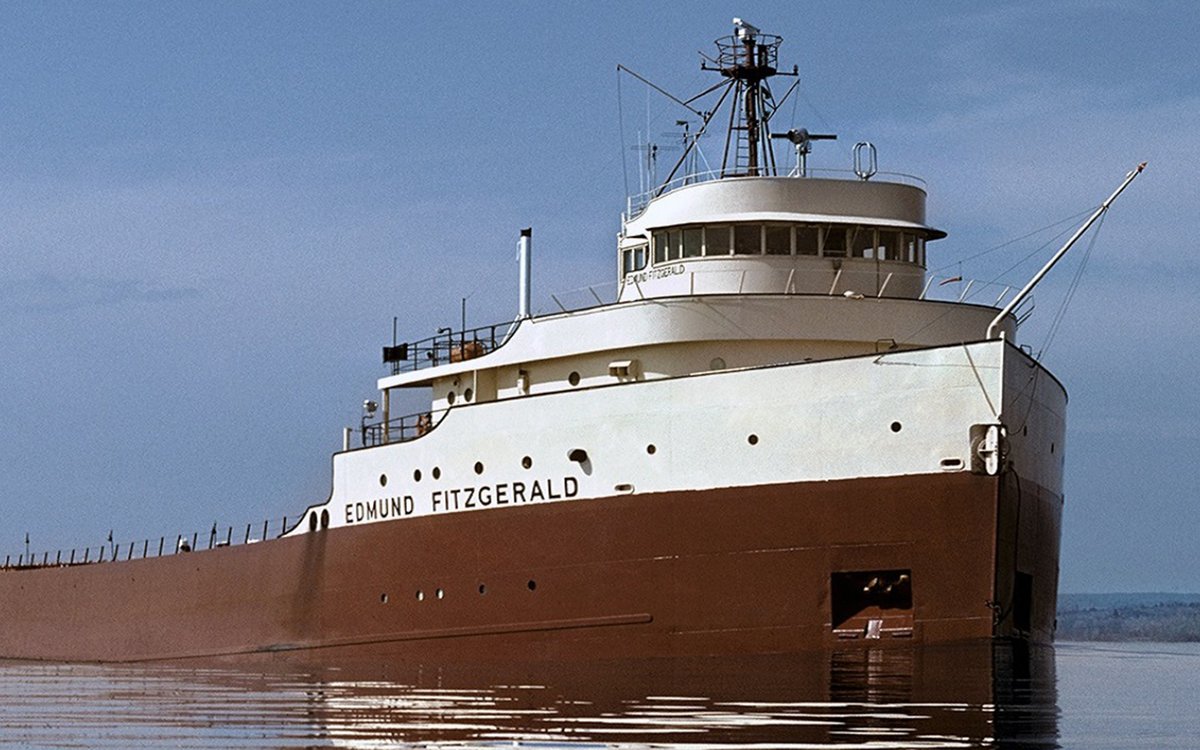50 Years Later, the Wreck of the Edmund Fitzgerald Still

Fifty Years Later: Remembering the Edmund Fitzgerald
On November 10, 1975, the SS Edmund Fitzgerald tragically sank in Lake Superior, marking a somber chapter in maritime history. As the 50th anniversary approaches, the mystery surrounding the ship’s demise continues to captivate public interest. This article explores the ship’s storied past, the events leading to its sinking, and how it is commemorated today.
The Legacy of the Edmund Fitzgerald
The SS Edmund Fitzgerald was a formidable vessel, measuring 729 feet and weighing 13,632 gross tons at its launch in 1958. Named after the president of the Northwestern Mutual Life Insurance Company, the ship’s christening was marred by misfortune. Elizabeth Fitzgerald, the president’s wife, struggled to break the champagne bottle on the first attempt, and when the ship was launched, it created a massive wave that caused a nearby grandstand to collapse, resulting in a tragic heart attack for an onlooker.
Despite these ominous beginnings, the Fitzgerald quickly became a workhorse on Lake Superior, transporting taconite from Silver Bay to steel mills in Toledo and Detroit. For 13 years, it held the title of the largest vessel on the Great Lakes, earning a prominent place in the region’s shipping history.
The Tragic Sinking and Its Aftermath
On November 9, 1975, the Fitzgerald departed from Superior, Wisconsin, loaded with 26,116 tons of taconite pellets bound for Zug Island in Detroit. Captain Ernest McSorley and a crew of 29 set sail in the afternoon, unaware of the impending storm. As night fell, severe weather conditions developed, with high winds and towering waves causing significant damage to both the Fitzgerald and the nearby vessel, the Arthur M. Anderson, which was following closely behind.
By November 10, the storm intensified. The two ships sought safety by navigating closer together, but visibility diminished due to snow and wind. At approximately 7:15 p.m., the Anderson lost radar contact with the Fitzgerald, which was just 17 miles from the safety of Whitefish Bay. Tragically, the Fitzgerald never reached its destination and remains the largest ship to have sunk in the Great Lakes.
In the aftermath, the Anderson led search efforts but found only the Fitzgerald’s lifeboats, with no survivors. The wreck was located days later through sonar technology, and in May 1976, a U.S. Navy team captured extensive images of the upturned ship. However, the exact cause of the sinking remains a mystery, fueling ongoing speculation and interest.
Canadian musician Gordon Lightfoot was inspired to write “The Wreck of the Edmund Fitzgerald” after seeing news coverage of the tragedy. His poignant ballad helped memorialize the event, ensuring that the story of the Fitzgerald would endure in the public consciousness through songs, books, and documentaries.
Commemorating the Fitzgerald
Since the 10th anniversary of the sinking, the Split Rock Lighthouse on Lake Superior has hosted a memorial service for the Fitzgerald. This year marks a significant milestone, as the event has sold out for the first time, attracting over 2,000 attendees—more than double the usual crowd. The memorial includes speeches, the reading of the names of the 29 crew members who lost their lives, and the tolling of a ship’s bell, culminating in the lighting of the lighthouse beacon.
Site manager Hayes Scriven noted the importance of this event in honoring the legacy of the Fitzgerald and its crew. This year’s ceremony will feature a speech from former site manager Lee Radzak, who first lit the beacon to commemorate the ship 40 years ago. As the anniversary approaches, the memory of the Edmund Fitzgerald continues to resonate, reminding us of the fragility of life at sea and the enduring power of remembrance.
